Imagine experiencing the world’s sensations—a feather’s touch, a pinprick’s sting—with newfound clarity. Dr. Ardem Patapoutian, a Nobel Prize-winning scientist, has not only imagined this but also revealed the intricate mechanisms behind it. His discoveries have revolutionized our understanding of how our bodies perceive the world through touch and pain. But beyond the accolades and scientific breakthroughs, lies a fascinating individual with a captivating life story. Join us as we delve into the Armenian roots, personal quirks, and surprising achievements that make Dr. Patapoutian a truly extraordinary human being.
Surprising Facts About Dr. Ardem Patapoutian
While his name might not be universally recognized, Dr. Ardem Patapoutian’s scientific findings have touched all our lives—quite literally! This remarkable scientist has unlocked the secrets of touch and pain, paving the way for potential treatments for chronic pain, a condition affecting millions worldwide. However, his narrative extends far beyond laboratory walls.
- From War-Torn Beirut to Scientific Superstardom: Dr. Patapoutian’s journey began in Lebanon, a country grappling with the turmoil of war. Imagine overcoming such adversity to ascend to the pinnacle of the scientific world—a testament to his remarkable resilience. This experience likely played a pivotal role in shaping his unwavering dedication to scientific excellence.
- Unlocking the Mysteries of Touch: His groundbreaking research unveiled the secrets of “Piezo proteins,” microscopic cellular gateways that enable us to experience a spectrum of sensations, from a gentle caress to a firm handshake. This discovery revolutionized our understanding of touch and pain, offering a glimmer of hope for novel therapies to alleviate chronic pain.
- Armenian Roots and a Passion for Perseverance: Dr. Patapoutian’s Armenian heritage significantly influenced his upbringing, instilling in him a deep-seated appreciation for perseverance. This cultural influence probably contributed to his unwavering determination to unravel intricate scientific puzzles.
- Beyond Touch: Itch, Temperature, and More: Dr. Patapoutian’s curiosity knows no bounds. His research transcends the realm of Piezo proteins, delving into the complex molecular mechanisms governing itch and our perception of temperature.
- Scientific Freedom to Push Boundaries: As a Howard Hughes Medical Institute Investigator, Dr. Patapoutian is afforded remarkable freedom and resources, empowering him to pursue groundbreaking research in neuroscience and continually push the frontiers of knowledge.
- Bridging Disciplines for a Deeper Understanding: Dr. Patapoutian fearlessly dismantles barriers between scientific disciplines. His interdisciplinary approach masterfully integrates molecular biology and neuroscience, culminating in a more comprehensive understanding of sensory perception.
- Championing Diversity in Science: Dr. Patapoutian’s background fueled his unwavering commitment to fostering diversity and inclusion within the scientific community. He stands as a role model, inspiring a diverse cohort of aspiring scientists.
- A Legacy of Recognition and Accolades: Dr. Patapoutian’s invaluable contributions have not gone unnoticed. He has been honored with prestigious awards such as the Breakthrough Prize in Life Sciences and the Kavli Prize in Neuroscience—a testament to the profound impact of his groundbreaking discoveries.
What did Ardem Patapoutian do?
Ardem Patapoutian isn’t just a name that rolls off the tongue; he’s a pioneering neuroscientist whose work has profoundly impacted our understanding of how we physically feel. Ever wonder how we distinguish between a gentle breeze and a firm handshake? Patapoutian’s research provides crucial insights into the mechanics of these sensations.
Our bodies are equipped with a complex network of sensors that detect various signals from the outside world, responsible for everything from feeling a tickle to our spatial awareness. Patapoutian sought to unravel the intricacies of how these sensors operate at the molecular level.
His most notable achievement lies in the discovery of PIEZO1 and PIEZO2—not adorable creatures but rather ion channels playing a critical role in our sense of touch. Picture them as minuscule gates on our cells, swinging open and closed in response to pressure. When we touch something, these gates open, transmitting signals to our brains that convey information about what we’re feeling.
What’s even more intriguing is that Patapoutian’s research suggests that these PIEZO channels extend beyond touch, potentially playing a role in other vital bodily functions such as blood pressure regulation and even pain sensation.
Speaking of pain, this is another area where Patapoutian’s work shines. He’s illuminated the molecular mechanisms underpinning various types of pain, a significant step towards developing more effective pain relief therapies. His contributions to science earned him the Nobel Prize in Physiology or Medicine in 2021, a testament to the impact of his discoveries on our understanding of the human body.
While his findings have opened up exciting new avenues for research, there’s still much to uncover. Patapoutian’s work marks the beginning of a journey into the complexities of our senses, with the promise of astounding discoveries yet to come.
Has an Armenian won a Nobel Prize?
Absolutely! In 2021, Ardem Patapoutian, a brilliant neuroscientist of Armenian descent, received the Nobel Prize in Physiology or Medicine, making him the first Armenian to receive this prestigious award.
Patapoutian’s research focused on how we experience touch and pain. His groundbreaking discoveries centered around PIEZO1 and PIEZO2, special receptors in our bodies that act like tiny antennas, picking up on pressure and sending signals to our brains. This work is crucial because it paves the way for a deeper understanding and potential new treatments for chronic pain, a condition that affects millions worldwide.
His achievement is an inspiration to aspiring scientists from diverse backgrounds, showcasing the power of dedication, a thirst for knowledge, and the importance of diverse voices in scientific advancements.
Who won the Nobel Prize for pain receptors?
In 2021, the Nobel Prize in Physiology or Medicine was awarded to David Julius and Ardem Patapoutian for their groundbreaking discoveries concerning how our bodies perceive temperature and touch, which are fundamentally linked to pain sensation.
Julius’s research focused on the sensation of heat. He discovered the TRPV1 receptor, which acts as a sensor, becoming activated by capsaicin, the compound that gives chili peppers their heat. This discovery was a game-changer in understanding pain signaling.
Patapoutian, on the other hand, delved into the sense of touch. His research led him to Piezo proteins, tiny sensors that detect pressure, explaining how we perceive different textures and pressure levels.
Their combined work is crucial because it paves the way for new treatments for chronic pain. While there’s still much to explore, their discoveries have opened up exciting new possibilities for understanding and treating pain.
How do you pronounce Ardem Patapoutian?
“Ar-dem pat-uh-poo-tee-an.” The emphasis falls on the second syllable (“dem”) and the fourth syllable (“poo”). The “a” in “Patapoutian” is pronounced like the “a” in “cat,” and the “ian” at the end is pronounced like “ee-an.”
Who was the first man to win the Nobel Prize in medicine?
In 1901, Emil Adolf von Behring, a German scientist, made history by becoming the first recipient of the Nobel Prize in Physiology or Medicine, awarded for his groundbreaking work on diphtheria.
Diphtheria, a severe bacterial infection, was a leading cause of death in children, often characterized by a thick coating forming in the back of the throat, obstructing breathing. Von Behring, alongside fellow researchers, made the crucial discovery that the bacteria itself wasn’t the primary culprit but rather a toxin it produced.
This discovery led to the revolutionary development of an “antitoxin” using the blood serum of animals that had been infected with diphtheria and had recovered. When this antitoxin was administered to infected patients, it effectively neutralized the diphtheria toxin, giving the body a fighting chance to overcome the infection.
Von Behring’s discovery marked the beginning of serum therapy, a novel approach to treating diseases by leveraging the immune system’s power. This groundbreaking work paved the way for advancements in vaccines and antibiotics, transforming the landscape of medicine.
While Von Behring’s work on diphtheria was monumental, his legacy extends far beyond a single disease. He ignited a paradigm shift in medical thinking, inspiring countless medical breakthroughs that continue to shape healthcare today.
Who is the only person to win the two Nobel Prizes for Peace and Chemistry?
Winning one Nobel Prize is an extraordinary achievement, but winning two is an unparalleled feat accomplished by only a select few. Linus Pauling stands out as the sole recipient of two unshared Nobel Prizes, a testament to his exceptional contributions to both science and humanity.
Pauling’s first Nobel Prize, awarded in Chemistry in 1954, recognized his groundbreaking work on the nature of chemical bonds, which revolutionized our understanding of how atoms combine to form molecules. This research had far-reaching implications for various fields, from materials science to biology.
Driven by a deep concern for the devastating consequences of nuclear war, Pauling became a tireless advocate for peace. He leveraged his platform to speak out against nuclear weapons testing, organized petitions, and rallied support for disarmament. His unwavering commitment to peace earned him the Nobel Peace Prize in 1962.
Pauling’s remarkable achievements serve as an inspiration, reminding us that we can all strive to make a difference in the world, regardless of our chosen fields. His legacy continues to encourage scientists and peace advocates alike to push boundaries and work towards a better future.
Which scientist is the only woman in history to receive two Nobel Prizes?
Marie Curie, a name synonymous with scientific brilliance, holds the extraordinary distinction of being the only woman in history to receive two Nobel Prizes. Her groundbreaking research in radioactivity not only shattered gender barriers but also revolutionized our understanding of the physical world and paved the way for groundbreaking medical advancements.
In 1903, Curie received the Nobel Prize in Physics alongside her husband, Pierre Curie, and physicist Henri Becquerel, for their pioneering work on radioactivity. This groundbreaking research explored the properties of radioactive elements and their potential applications.
Driven by an unquenchable thirst for knowledge, Curie continued her research, leading to the discovery of two new elements: polonium, named after her native Poland, and radium. This groundbreaking achievement earned her a second Nobel Prize, this time in Chemistry, in 1911, solidifying her place in scientific history.
Curie’s scientific contributions extended beyond the laboratory, as her research played a critical role in developing medical imaging techniques, particularly X-rays, which she tirelessly championed during World War I, saving countless lives on the battlefield. Her work also laid the foundation for radiation therapy, a revolutionary treatment for cancer that continues to save lives today.
Marie Curie’s legacy extends far beyond her remarkable scientific achievements. She serves as an inspiration to aspiring scientists, demonstrating the power of perseverance, relentless curiosity, and the pursuit of knowledge for the betterment of humanity.
Who was the youngest person to win the Nobel Prize in Physiology or Medicine?
The Nobel Prize in Physiology or Medicine is awarded to individuals who make groundbreaking discoveries in the field of life sciences or medicine. While many recipients are seasoned researchers, the youngest person to receive this prestigious award was Frederick G. Banting, who, at the age of 32, achieved this remarkable feat in 1923.
Banting’s groundbreaking research focused on diabetes, a chronic condition that affects millions worldwide. Prior to his discovery, diabetes was essentially a death sentence. Patients adhered to strict diets, but even then, complications often proved fatal. However, Banting’s work changed the course of diabetes treatment forever.
His research led to the discovery of insulin, a hormone produced by the pancreas that plays a vital role in regulating blood sugar levels. This discovery was a game-changer for individuals with diabetes, offering them a lifeline and dramatically improving their quality of life. Insulin therapy, made possible by Banting’s tireless efforts, continues to be the cornerstone of diabetes management today.
Banting’s story is one of perseverance, scientific curiosity, and a deep desire to alleviate human suffering. His legacy extends beyond his groundbreaking discovery, inspiring generations of scientists to push the boundaries of medical research and strive for breakthroughs that improve human health.
Who was the First Person to Receive Two Nobel Prizes Physical and Chemistry?
Marie Curie, a name synonymous with scientific brilliance, holds the unparalleled distinction of being the first person, and to this day, the only person, to receive Nobel Prizes in two different scientific fields. Her groundbreaking work on radioactivity not only transformed our understanding of the physical world but also paved the way for transformative medical advancements.
In 1903, Curie received the Nobel Prize in Physics, jointly with her husband, Pierre Curie, and physicist Henri Becquerel. Their groundbreaking research explored the properties of radioactive elements, unveiling a new realm of physics that would forever change our understanding of the atom and its nucleus.
Driven by an unyielding passion for discovery, Curie continued her research, leading to the isolation and discovery of two new elements: polonium, named after her homeland, Poland, and radium. This remarkable achievement earned her a second Nobel Prize, this time in Chemistry, in 1911, solidifying her place as a scientific icon.
Curie’s impact extends far beyond her groundbreaking discoveries. She fearlessly challenged gender norms in a male-dominated field, inspiring generations of women to pursue careers in science. Her work also had significant implications for medicine, particularly in the development of medical imaging and radiation therapy, which continue to save countless lives today.
Marie Curie’s legacy stands as a testament to the power of human curiosity, the pursuit of knowledge, and the potential for scientific discovery to transform our world.
Which scientists got two Nobel Prizes of which one was in peace?
Among the extraordinary individuals who have received two Nobel Prizes, three notable figures stand out for their remarkable achievements in both their respective scientific fields and their unwavering dedication to peace.
Linus Pauling, an American chemist, received the Nobel Prize in Chemistry in 1954 for his groundbreaking work on the nature of the chemical bond, which revolutionized our understanding of how atoms interact to form molecules. Deeply affected by the threat of nuclear war, Pauling became a passionate advocate for peace, organizing petitions and speaking out against the testing of nuclear weapons. His unwavering activism earned him the Nobel Peace Prize in 1962, making him the only person to receive two unshared Nobel Prizes.
Marie Curie, a pioneer in the field of radioactivity, received two Nobel Prizes for her groundbreaking scientific discoveries. However, neither of these awards was directly related to peace. She received the Nobel Prize in Physics in 1903 and the Nobel Prize in Chemistry in 1911 for her groundbreaking contributions to our understanding of radioactivity and the discovery of polonium and radium, respectively.
Frederick Sanger, a British biochemist, received the Nobel Prize in Chemistry twice, but neither award was related to peace. His first Nobel Prize, awarded in 1958, recognized his groundbreaking work in determining the structure of insulin, a hormone crucial for regulating blood sugar levels. In 1980, he received his second Nobel Prize in Chemistry for developing a method to determine the base sequence in DNA, a discovery that revolutionized the field of genetics.
These three extraordinary individuals, each with their unique contributions to science and humanity, remind us that scientific endeavors extend beyond the laboratory. They highlight the power of knowledge and innovation to address global challenges and create a more peaceful and just world.
It’s essential to note: The world of scientific research is constantly evolving, with new discoveries and interpretations emerging all the time. It’s always a good idea to stay curious and keep learning about the latest advancements in science and technology!
For more insights into fascinating individuals and their achievements, explore our articles on:
- The remarkable life and accomplishments of businessman and entrepreneur Ferit Sahenk: astonishing facts about ferit sahenk
- The inspiring journey and notable achievements of tennis legend Jimmy Connors: facts about jimmy connors
- Unlocking 2-Letter Words with U: The Definitive Guide - April 4, 2025
- Unlock Words with the Letters THREE: Top Unscramble Tools 2025 - April 4, 2025
- Master Scrabble: X & Z Words for High Scores - April 4, 2025
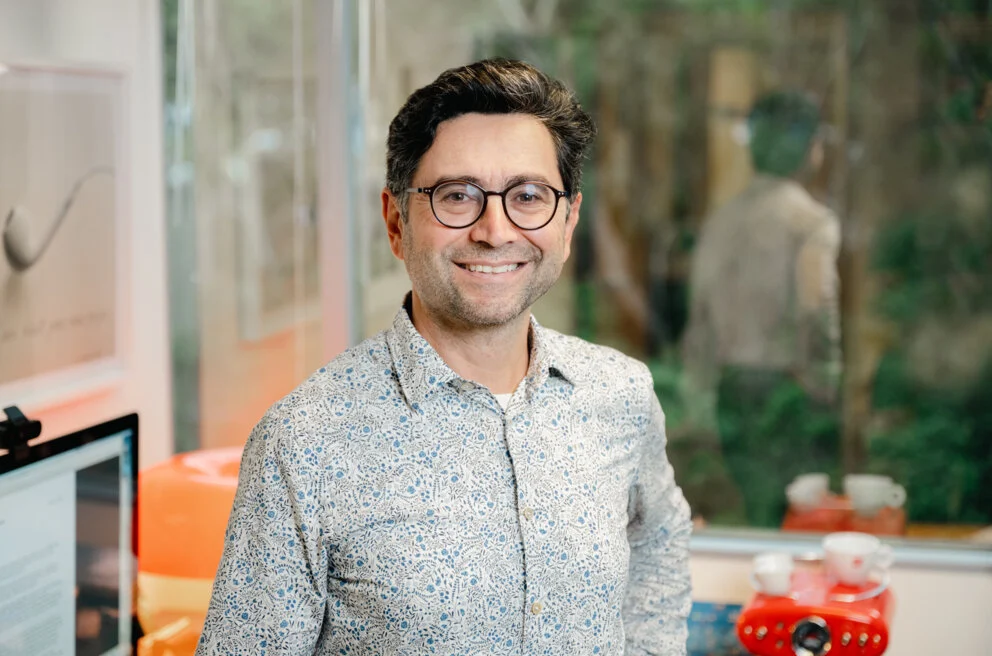
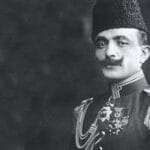
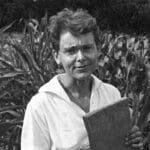
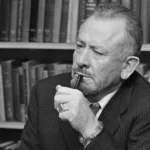


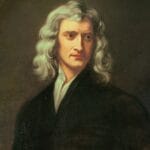










2 thoughts on “Beyond the Nobel Prize: Surprising Facts About Dr. Ardem Patapoutian”
Comments are closed.